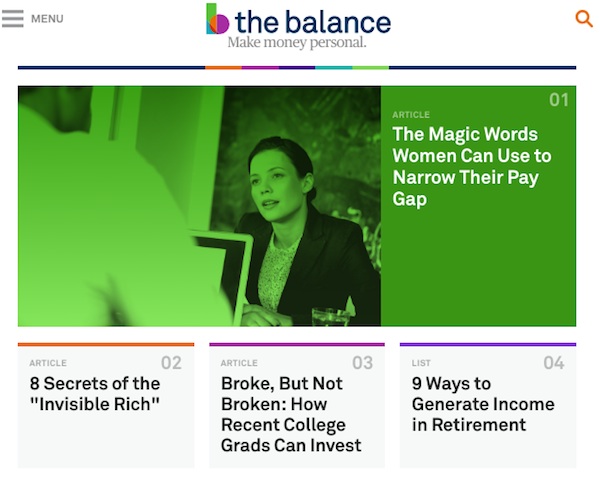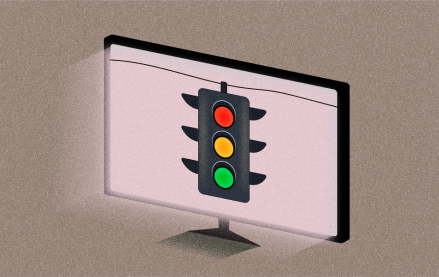
There’s no shortage of sites catering to people who have lots of money and want advice on how to spend it. So with a new personal finance site, About.com is going for the “adulting” market.
Half the audience that comes to About.com for financial-related articles are aged 18-34 and skew female. So with its new vertical, The Balance, it’s aiming at young adults making big financial decisions — like opening up a retirement account or buying insurance for the first time — with 34,000 pieces of content around personal finance, investing, money hacks, career advice and small business tips. That content was previously housed in About.com’s business/finance and jobs/careers network, which had 5.8 million unique visitors in July, according to comScore.
“We help you understand big decisions in your life and tell them in a straightforward, accessible way,” said Neil Vogel, CEO of About.com. “We are financial advice for the 99 percent.”
The Balance is the second vertical that About.com has launched as part of a strategy to unbundle its content into distinct brands, recognizing that as the internet has matured, people are preferring specialty sites over big-scale portals. The first was a health site it launched in April, Verywell. A tech vertical is set to follow later this year.
About.com gave Verywell a friendly, graphics-heavy design scheme and pages that are light on ads and editorial elements. About.com applied a similar approach to The Balance, but played it a little straighter, reflecting the weightiness of the topic. “It looks a little like a finance site, but it’s so much nicer and friendlier,” Vogel said.

Kirk Olson, vp of Trendsights at Horizon Media’s Why Group, a unit that looks at consumer trends and applies them to brands, said despite the fact that a lot of millennials face challenges getting on their feet, a significant number of them are buying homes and planning for their financial future. The challenge for The Balance will be to educate advertisers that still lump all millennials together.
“There are marketers who are aware there are millennials who have entered this phase, but from what I see, a lot of marketers are still stuck on those old ways of thinking about millennials,” he said.
Having fewer ad placements also means The Balance has to sell more of them to make the same amount of revenue. Vogel is confident the demand will be there, though, as clients are asking for financial editorial content for young consumers (for them, The Balance even has a sales package called “adulting.”) His bet is also that having a clean, easy-to-read site will induce consumers will lead them to come back more, which will make up for the loss in ad inventory.
“We’re trying to differentiate by appealing to advertisers by not annoying consumers,” he said. “We’ve learned how to say ‘no’ to advertisers.”
More in Media

What publishers are wishing for this holiday season: End AI scraping and determine AI-powered audience value
Publishers want a fair, structured, regulated AI environment and they also want to define what the next decade of audience metrics looks like.

Media giant Essence launches a marketplace for Black women-led brands
Essence has launched WeLoveUs.shop, a new online marketplace dedicated to Black women-led brands.

In Graphic Detail: The state of AI referral traffic in 2025
The stats reveal a new audience pipeline forming outside of traditional search and social platforms.





